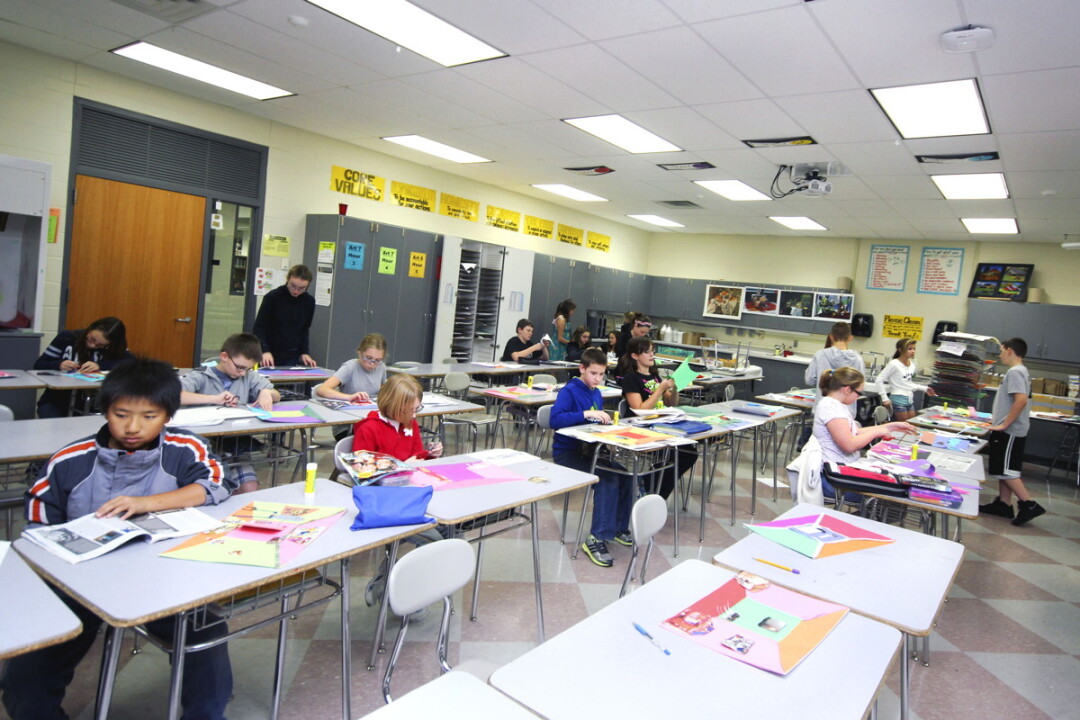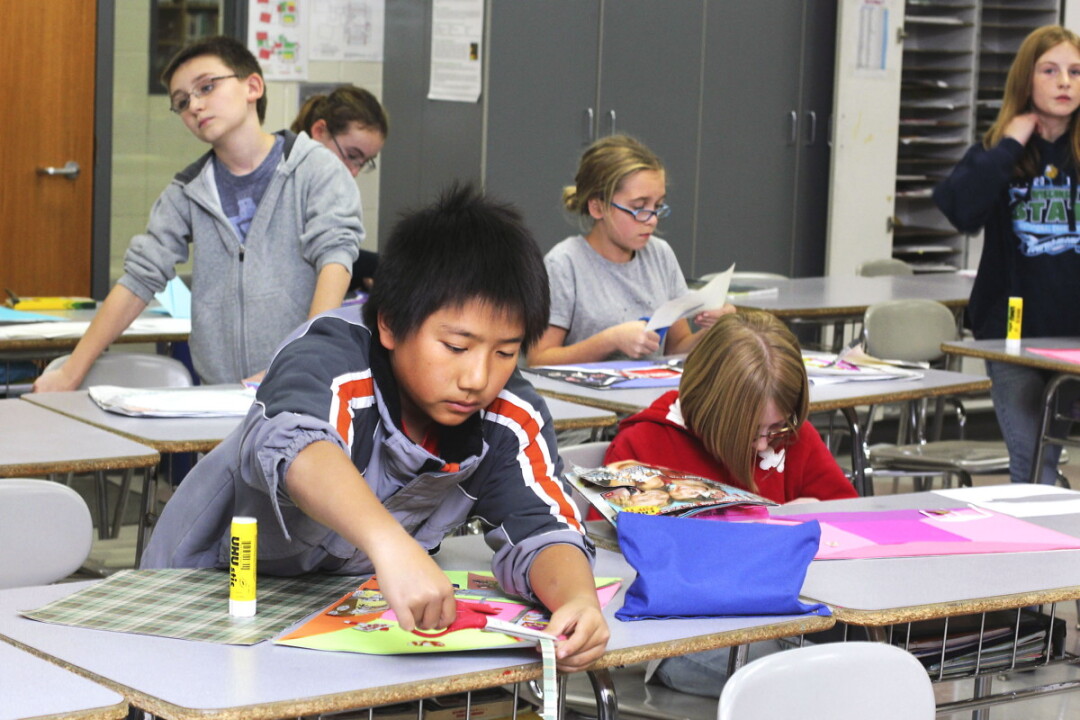Ready for Referendums
Eau Claire, Chippewa Falls school boards seek funding boost from voters on Nov. 8
Tom Giffey, photos by Andrea Paulseth |

Voters in two of the Chippewa Valley’s largest school districts will decide whether to increase school funding via referendums on the Nov. 8 election ballot.
In the Eau Claire school district, voters will choose whether to boost the school budget by $5.86 million annually for 15 years to maintain buildings, keep smaller class sizes, upgrade technology, and move to a new employee pay plan.
Meanwhile, Chippewa Falls voters will face two referendum questions: One asks for $61.2 million to replace Stillson Elementary School and perform maintenance and repair on other buildings; the second requests $98 million for a new high school.
EAU CLAIRE SCHOOLS
After studying the possibility for more than a year, the Eau Claire school board voted unanimously on Aug. 15 to put a referendum on the Nov. 8 election ballot.
Voters are most accustomed to school referendums being used to pay for construction needs. For example, in 2011 the Eau Claire district got permission from voters to borrow about $52 million to remodel four schools. However, the upcoming referendum will include both borrowing for debt as well as increasing taxes to pay for the district’s operations – in other words, to pay teachers, buy computers, and keep the lights on.
“We’re trying to go to referendum, but (we’re) also trying to educate the public on how broken the school funding system is in Wisconsin.” – Chris Hambuch-Boyle, Eau Claire school board president
According to a fact sheet prepared by the school district, about $3.5 million of the referendum’s annual price tag will go toward a new compensation play to retain and recruit high-quality employees. The rest, about $2.3 million a year, will go toward filling an existing annual deficit.
Why is such a referendum even necessary? Advocates point to Wisconsin’s convoluted method of funding public education.
“We’re trying to go to referendum, but (we’re) also trying to educate the public on how broken the school funding system is in Wisconsin,” said school board President Chris Hambuch-Boyle.
In her opinion, the problem dates back until at least 1993, when the state Legislature – mindful of public unhappiness over property taxes – passed revenue caps that put tight limits on the taxes school districts can levy on property owners. At the time, the Eau Claire school district’s spending per pupil was relatively low compared with its peer, and the revenue caps have essentially locked that disparity in place for more than 20 years.

“Were actually being penalized for being a conservative spending district,” Hambuch-Boyle explained.
Consider the following: In the 2014-15 school year, the district spent $9,828 per pupil, compared with a state average of $10,185. This difference of $357 per student may seem modest, but if you multiply it by the roughly 11,300 students in Eau Claire public schools, you get a total of more than $4 million. In essence, if Eau Claire had been an average-spending district back in 1993, it would have an additional $4 million in its coffers every year – more than enough to cover the projected deficit of $2.3 million this school year.
If the referendum isn’t passed, Hambuch-Boyle said, not only will the district have to continue to defer maintenance needs but it also will have to either dip further into its capital reserves (which would be exhausted within a few years) or make cuts that she terms “absolutely catastrophic.”
“I think the referendum – and we have to pass this – will give us the sustainability for the 15 years we’re allowed to go above the (revenue) caps,” Hambuch-Boyle added.
According to district estimates, the referendum will mean an annual property tax increase of $95 for the owner of a home worth $100,000 or a $190 increase for a $200,000 home.
In the coming weeks, school board members and other referendum backers – including the group Support Eau Claire Public Schools – will be making the pitch to voters about why they should support the referendum. Hambuch-Boyle said district residents should remember that, unlike almost any other institution in society, public school don’t control either their budgets (because of revenue caps) or who enters their doors – they must serve all children, regardless of income, background, or circumstance.
“I am the eternal optimist, because I believe in our community, and I utterly believe in the miracle of public schools,” she said.
Questions and Their Costs
On the Nov. 8 ballot, the Eau Claire school district will ask permission to spend an extra $5.86 million a year for 15 years to maintain buildings, retain smaller classes, upgrade technology, and move to a new employee pay plan.
The Chippewa Falls school district will have two referendums. The first would spend $61.2 million for a new Stillson Elementary and maintenance on other buildings. The second would spend $98 million on a new high school.
CHIPPEWA FALLS SCHOOLS
Over the past year, the Chippewa Falls school board has studied and weighed numerous options to upgrade its facilities. These efforts came after the district commissioned a comprehensive facilities plan, which examined short- and long-term building needs over the next 25 years. The study, which is available on the district’s website, identified a variety of critical building needs, including inadequate space at several elementary schools in the coming years.
Superintendent Heidi Taylor-Eliopoulos explained that the Chippewa Falls school district hasn’t passed a facilities referendum in nearly 20 years. However, its buildings – may of which were built in the 1950s and ’60s – have continued to age while the number of students the schools serve has increased.
“The slow and steady (enrollment) growth has caught up to us, and the deferred maintenance has caught up,” she said.
After repeated discussions, the board voted on Aug. 18 to ask residents for $61.2 million to replace Stillson Elementary as well as to repair and upgrade other buildings and buy land for a new high school. Stillson has been added to seven or eight times over the years, its plumbing and other systems are past their life expectancy, and its oldest sections date to 1930, Taylor-Eliopoulos said.
Later, after appeals from some residents and board members who wanted additional district facility needs added to the mix, the board voted on Aug. 29 to add a second referendum question to the ballot, this one asking for permission to spend $98 million to build a new high school.
If the latter referendum passes, it will have a domino effect on the district: If a new high school is built, the current high school would become a middle school, the current middle school would become an elementary school and would house the district’s adult community education program, and the current Hillcrest Elementary School would become the district’s administrative office (administrators are currently spread across three sites) as well as its alternative school.
The tax impact of the referendums would vary depending on the Nov. 8 vote. If only the first referendum passes, district property taxes would increase $2 per $1,000 of assessed value, or $270 per year on a home worth $135,000 (the district average) over the next decade. If only the second referendum passes, the cost would be $3.20 per $1,000 of assessed value, or $432 on an average home annually for 10 years. Finally, if both referendums pass, the district will borrow the money for 20 years, which means the impact would be an estimated $2.86 per $1,000 of assessed value, or $386 annually on an average home.
While offering the voters two referendum questions creates the possibility that only one of them will pass, leaving the other part of the district’s needs unmet, Taylor-Eliopoulos said this situation reflects the multitude of opinions that residents have offered to board members about the district’s needs.
“I think the board has set up a ballot that’s representative of the feedback they’re getting,” she said.
To learn more about the Eau Claire referendum, visit www.ecasd.us and follow the “Referendum” link or search for “Support Eau Claire Public Schools” on Facebook. For more on the Chippewa Falls referendums, keep an eye on cfsd.chipfalls.k12.wi.us.




















